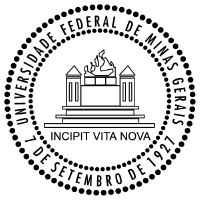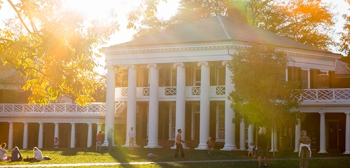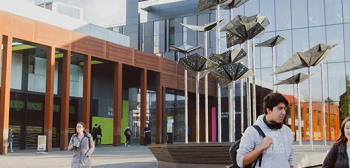- #=595 QS Global World Ranking
- PublicStatus
- Very HighResearch Output
- 45,474Total Students
- 3,476Faculty
- 569Int'l Students
QS Global World Ranking
The University’s position in the current QS World University Rankings.
The University’s position in the current QS World University Rankings.
Status
Whether the University is funded by the government of that country or state, or funded by private donations.
Whether the University is funded by the government of that country or state, or funded by private donations.
Research Output
The research intensity of the University, based on the number of papers output relative to the University’s size.
The research intensity of the University, based on the number of papers output relative to the University’s size.
Total Students
The number of full time equivalent students enrolled at the University.
The number of full time equivalent students enrolled at the University.
Faculty
The number of full time equivalent teaching staff employed by the University.
The number of full time equivalent teaching staff employed by the University.
Int'l Students
The number of full time equivalent international students enrolled at the University.
The number of full time equivalent international students enrolled at the University.
Universidade Federal de Minas Gerais
About
Read more
Read less
The origins in Brazil of the university go back as far as the 19th century, when it first appeared in the Republic as a continuation of a process that began during the Empire, with the opening of the first institutions of higher education. In Minas Gerais, the first institution of higher education, the School of Pharmacy in Ouro Preto, was founded in 1839. In 1875, the School of Mining was created and, in 1892, already under the Republican regime, the School of Law was established in the ancient capital of the state. In 1898, when the capital was moved to Belo Horizonte, the School of Law was moved as well. Then, in 1907, the Free School of Dentistry was created and, four years later, the Schools of Medicine and Engineering opened. In 1911, the School of Pharmacy was added to the Free School of Dentistry. A group of patriots, the "Inconfidentes," who rebelled against Portuguese domination, conceived of the idea of a university in the state of Minas Gerais, which was founded as the Universidade de Minas Gerais (UMG) in 1927. The state-subsidized private institution brought together the four institutions of higher learning that existed in Belo Horizonte. UMG remained within the state system until 1949, when it was federalized. In the 1940s, a large area in the Pampulha region became the site for the construction of University City. The first structures erected were the Institute of Mechanics (now the Vocational School) and the Main Building. The effective occupation of the campus by the university community started only in the 1960s, when the construction of the buildings that today house most of the academic units was started. The present name – Universidade Federal de Minas Gerais (UFMG) – was not adopted until 1965.When the university was federalized, the Schools of Architecture, Philosophy, and Economics had already been integrated into UFMG. Afterward, as part of its expansion and diversification, the university incorporated and created new units and schools: the Schools of Nursing (1950) and Veterinary Medicine (1961), the Minas Gerais Conservatory of Music (1962), and the Schools of Library (1962), Fine Arts (1963), and Physical Education (1969). In 1968, the organization of UFMG was reformed, which resulted in the division of the old School of Philosophy into various schools and institutes. Thus, the present School of Philosophy and Human Sciences, the Institutes of Biological Sciences and Exact Sciences, the Institute of Geo-Sciences, and the Schools of Letters and Education appeared. Today, firmly established as a model of excellence for the rest of the country, UFMG continues to expand. Agronomy (in Montes Claros), Drama, Control and Automation, Computational Mathematics, Audiology and Speech Pathology, and Nutrition have been added in the last five years, bringing the total of courses offered at the undergraduate level to 48. COURSES UFMG offers its courses in the following areas: Agriculture Biological Sciences Engineering Exact and Earth Sciences Human Sciences Health Sciences Applied and Social Sciences Linguistics, Letters, and Arts UNDERGRADUATE COURSES At present, UFMG offers 44 undergraduate courses in all areas of knowledge to 19,016 students. Most courses are offered in Belo Horizonte at 19 academic units, of which 11 are located on the Pampulha campus. There six off-campus units, and the Schools of Medicine and Nursing, together with the Hospital das Clínicas, constitute the Saúde campus. Only the Agronomy course is taught outside the State capital, at the Center for Agriculture, in Montes Claros, in northern Minas Gerais. GRADUATE COURSES UFMG offers graduate courses in Agriculture, Biological and Physiological Sciences, Exact and Earth Sciences, Human Sciences, Health Sciences, Engineering, Linguistics, Letters, and Arts. Of the 141 courses offered, 51 are at Specialization, 55 at Masters', and 35 at Doctoral level. In the first semester of 2000, there were 6,729 students enrolled, of which 2,293 in Specialization, 3,094 in Masters', and 1,343 in Doctoral programs. EXTENSION PROGRAMS UFMG's extension programs are characterized by the broad range of services provided for the community, from professional updating courses to environmental revitalization projects to cultural events, such as the Winter Festival. In 1999, around 2.2 million people received some kind of assistance from UFMG via extension projects. The University is present in all the 856 municipalities of Minas Gerais, with...
About
The origins in Brazil of the university go back as far as the 19th century, when it first appeared in the Republic as a continuation of a process that began during the Empire, with the opening of the first institutions of higher education. In Minas Gerais, the first institution of higher education, the School of Pharmacy in Ouro Preto, was founded in 1839. In 1875, the School of Mining was created and, in 1892, already under the Republican regime, the School of Law was established in the ancient capital of the state. In 1898, when the capital was moved to Belo Horizonte, the School of Law was moved as well. Then, in 1907, the Free School of Dentistry was created and, four years later, the Schools of Medicine and Engineering opened. In 1911, the School of Pharmacy was added to the Free School of Dentistry. A group of patriots, the "Inconfidentes," who rebelled against Portuguese domination, conceived of the idea of a university in the state of Minas Gerais, which was founded as the Universidade de Minas Gerais (UMG) in 1927. The state-subsidized private institution brought together the four institutions of higher learning that existed in Belo Horizonte. UMG remained within the state system until 1949, when it was federalized. In the 1940s, a large area in the Pampulha region became the site for the construction of University City. The first structures erected were the Institute of Mechanics (now the Vocational School) and the Main Building. The effective occupation of the campus by the university community started only in the 1960s, when the construction of the buildings that today house most of the academic units was started. The present name – Universidade Federal de Minas Gerais (UFMG) – was not adopted until 1965.When the university was federalized, the Schools of Architecture, Philosophy, and Economics had already been integrated into UFMG. Afterward, as part of its expansion and diversification, the university incorporated and created new units and schools: the Schools of Nursing (1950) and Veterinary Medicine (1961), the Minas Gerais Conservatory of Music (1962), and the Schools of Library (1962), Fine Arts (1963), and Physical Education (1969). In 1968, the organization of UFMG was reformed, which resulted in the division of the old School of Philosophy into various schools and institutes. Thus, the present School of Philosophy and Human Sciences, the Institutes of Biological Sciences and Exact Sciences, the Institute of Geo-Sciences, and the Schools of Letters and Education appeared. Today, firmly established as a model of excellence for the rest of the country, UFMG continues to expand. Agronomy (in Montes Claros), Drama, Control and Automation, Computational Mathematics, Audiology and Speech Pathology, and Nutrition have been added in the last five years, bringing the total of courses offered at the undergraduate level to 48. COURSES UFMG offers its courses in the following areas: Agriculture Biological Sciences Engineering Exact and Earth Sciences Human Sciences Health Sciences Applied and Social Sciences Linguistics, Letters, and Arts UNDERGRADUATE COURSES At present, UFMG offers 44 undergraduate courses in all areas of knowledge to 19,016 students. Most courses are offered in Belo Horizonte at 19 academic units, of which 11 are located on the Pampulha campus. There six off-campus units, and the Schools of Medicine and Nursing, together with the Hospital das Clínicas, constitute the Saúde campus. Only the Agronomy course is taught outside the State capital, at the Center for Agriculture, in Montes Claros, in northern Minas Gerais. GRADUATE COURSES UFMG offers graduate courses in Agriculture, Biological and Physiological Sciences, Exact and Earth Sciences, Human Sciences, Health Sciences, Engineering, Linguistics, Letters, and Arts. Of the 141 courses offered, 51 are at Specialization, 55 at Masters', and 35 at Doctoral level. In the first semester of 2000, there were 6,729 students enrolled, of which 2,293 in Specialization, 3,094 in Masters', and 1,343 in Doctoral programs. EXTENSION PROGRAMS UFMG's extension programs are characterized by the broad range of services provided for the community, from professional updating courses to environmental revitalization projects to cultural events, such as the Winter Festival. In 1999, around 2.2 million people received some kind of assistance from UFMG via extension projects. The University is present in all the 856 municipalities of Minas Gerais, with...
Campus locations
Pampulha,
Av. Antonio Carlos , Belo Horizonte , Minas Gerais , Brazil , 31270-901
Similar Universities
Al Imam Mohammad Ibn Saud Islamic University
Riyadh, Riyadh
Universidad del Valle de Guatemala (UVG)
18 Avenida 11-95 Zona 15, Guatemala City
McIntire School of Commerce
125 Ruppel Drive, Virginia
Related content

Top 10 Universities in Brazi…
By
Sabrina
Collier
Updated
158
0

Out Now: BRICS University Ra…
By
Craig
OCallaghan
Updated
49
0
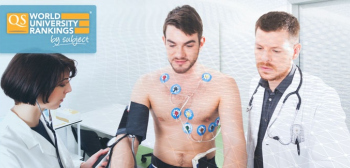
Top Universities for Sports-…
By
Craig
OCallaghan
Updated
75
0

Top 10 Universities in Brazi…
By
Sabrina
Collier
Updated
235
0

Top 10 Universities in Brazi…
By
Laura
T
Updated
173
0

Top 10 Universities in Latin…
By
Laura
Bridgestock
Updated
296
0

Top Universities in Brazil
By
Hasna
Haidar
Updated
1.2k
21
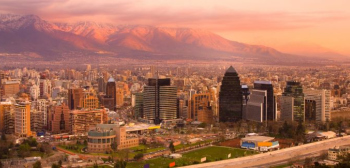
Top Ten Universities in Lati…
By
Laura
Bridgestock
Updated
56
0
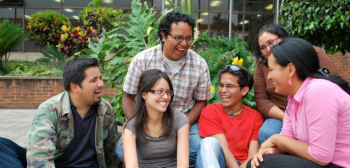
Latin American Universities’…
By
Guest
Writer
Updated
91
0

Brazil Dominates Latin Ameri…
By
QS Staff
Writer
Updated
133
0
Test preparations
Featured University


Sponsored
438
QS World University Rankings
-
10 UG & 47 PGTotal courses
-
Private for ProfitStatus
-
HighResearch output
Universidade Federal de Minas Gerais
EN
